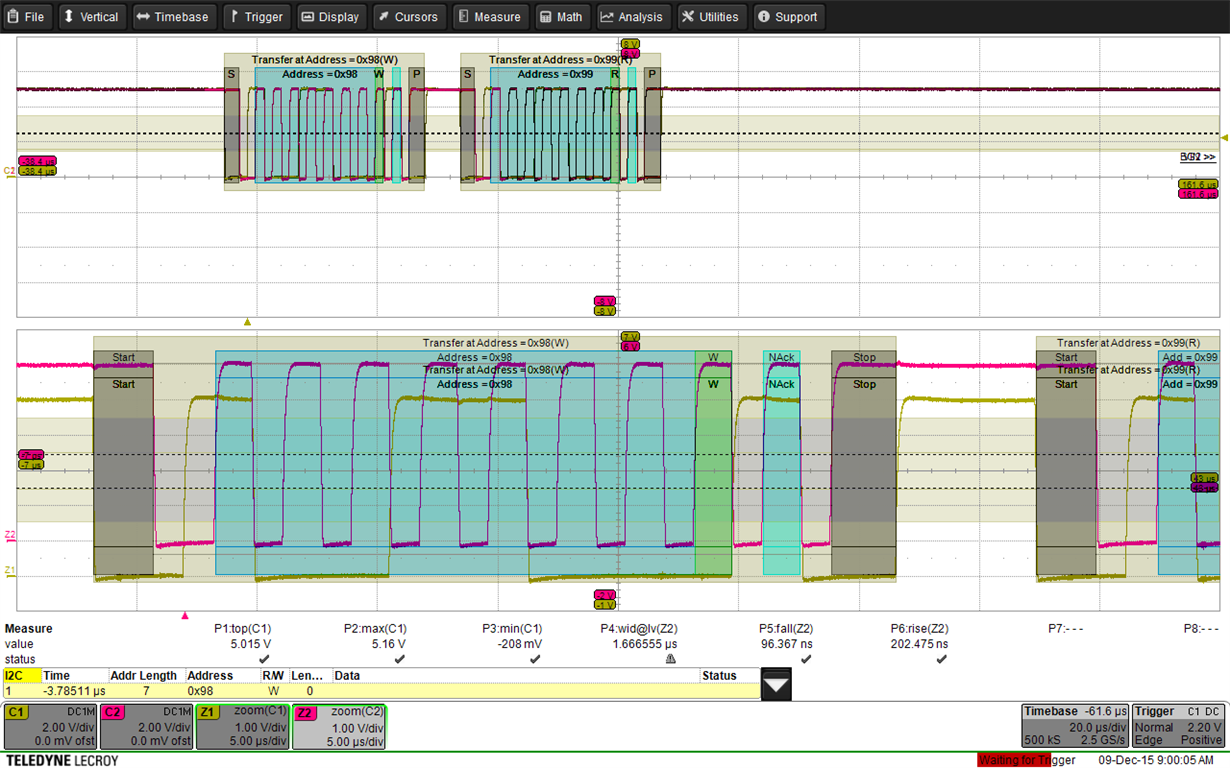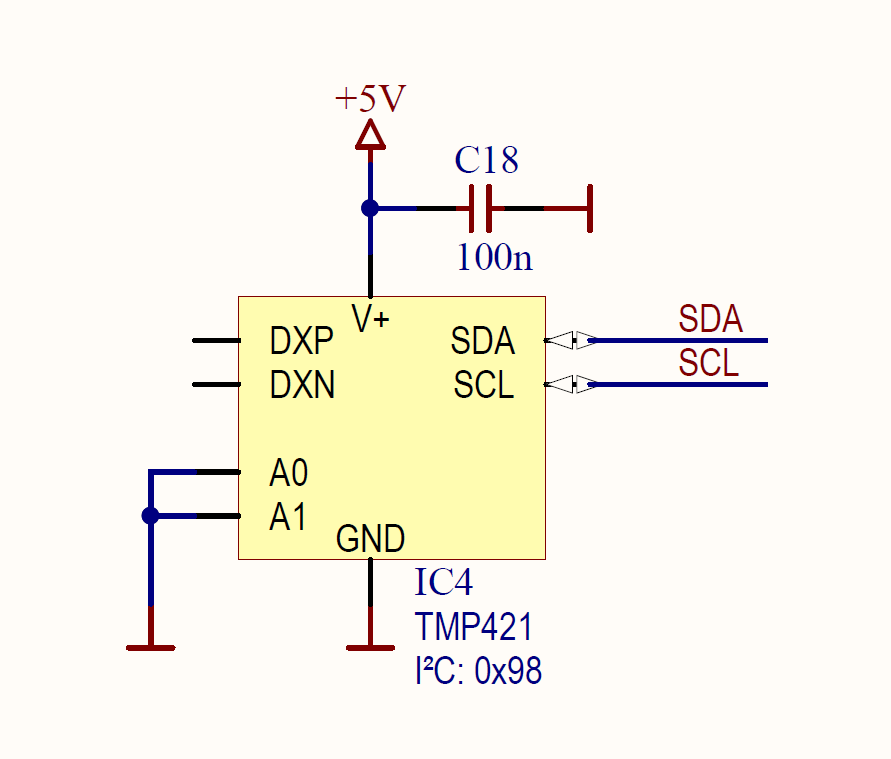Hello,
we see a serious problem when trying to communicate to the TMP421 Temp sensor via I²C with our Atmel 32Bit Controller.
System Voltage: 5V
Clock Frequency: 400kHz (also tried 200kHz)
Most interesting: when using low PullUp values (2k2 / 4k7) it doesn't work. with 10k it's working sometimes, but with 22k and very long rise times it is working.
When checking with the oscilloscope I cannot see any problem with the I²C Protocol or any timing issues. The oscilloscope is decoding correctly everytime!
You can see that risetime is in specification with the TMP421 values...



